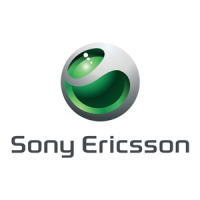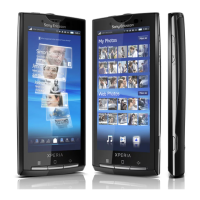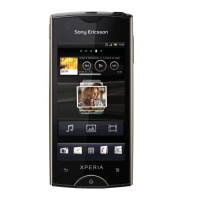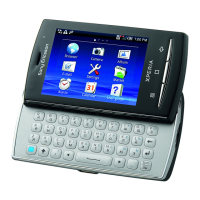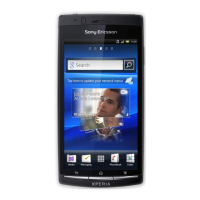Do you have a question about the Sony Ericsson XPERIA and is the answer not in the manual?
Guides on inserting SIM/battery, charging, powering on/off, and screen alignment.
Managing SMS, MMS, Email, Phone calls, and Messenger.
Using Internet Explorer, Sharing, Wi-Fi, and Bluetooth.
Accessing Camera, Multimedia, Radio, Games, and PlayNow.
Managing Bluetooth beams, connections, USB, Wi-Fi, and mobile data.
Using hardware keyboard, on-screen keyboard, and handwriting recognition.
Using Letter Recognizer, Block Recognizer, and Transcriber for text input.
Overview, opening/closing, switching panels, and using Panel Manager.
Making, receiving, ending calls, and using the keypad.
International calls, call history, rejecting calls, and emergency calls.
Managing network settings, speed dial, and phone services.
Steps for initiating video calls and adjusting settings.
Activating SIM/phone protection, editing PIN, and IMEI number.
Setting up and performing sync with company Exchange Server.
Using Direct Push, Fetch Mail, scheduled sync, and searching.
Flagging, auto-replies, managing folders, meeting requests, and security.
Using Bluetooth modes, partnerships, and beaming information.
Using phone as USB/Bluetooth modem for computer internet access.
Taking photos, settings, zoom, effects, and auto options.
Recording videos, settings, effects, and self-timer options.
Power saving, brightness, turning off connections, and phone reset.
| Model | XPERIA X1 |
|---|---|
| Status | Discontinued |
| Network | GSM / HSPA |
| 2G bands | GSM 850 / 900 / 1800 / 1900 |
| GPRS | Class 10 |
| EDGE | Class 10 |
| SIM | Mini-SIM |
| Operating System | Microsoft Windows Mobile 6.1 Professional |
| RAM | 256 MB |
| Storage | 512 MB |
| Alert types | Vibration; Downloadable polyphonic, MP3 ringtones |
| Loudspeaker | Yes |
| 3.5mm jack | No |
| WLAN | Wi-Fi 802.11b/g |
| Bluetooth | 2.0, A2DP |
| GPS | Yes, with A-GPS |
| Java | Yes, MIDP 2.0 |
| Battery | Removable Li-Po 1500 mAh battery |
| Release Date | 2008 |
| Announced | 2008, February |
| 3G bands | HSDPA 850 / 1900 / 2100 |
| Dimensions | 110.5 x 52.6 x 17 mm |
| Weight | 145 g |
| Type | TFT, 65K colors |
| Size | 3.0 inches |
| Resolution | 480 x 800 pixels |
| Processor | 528 MHz |
| Camera | 3.15 MP, AF |
| Video | Yes |
| Radio | FM radio |
| USB | miniUSB |
| Messaging | SMS, MMS, Email |
| Browser | WAP 2.0/HTML |
| Games | Yes |
| Talk time | Up to 10 h |
| Colors | Black, Silver |
| Memory Card slot | microSD (dedicated slot) |
